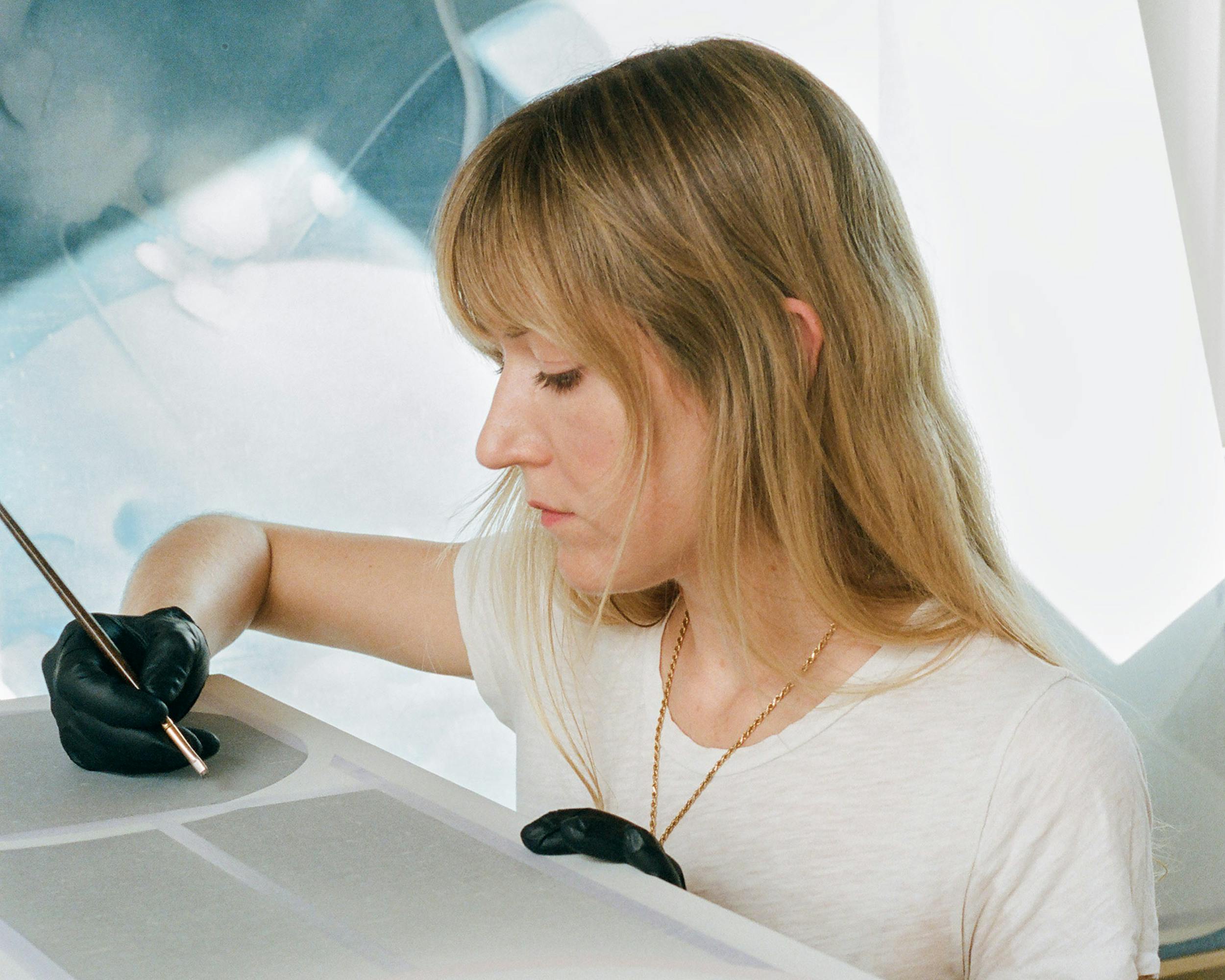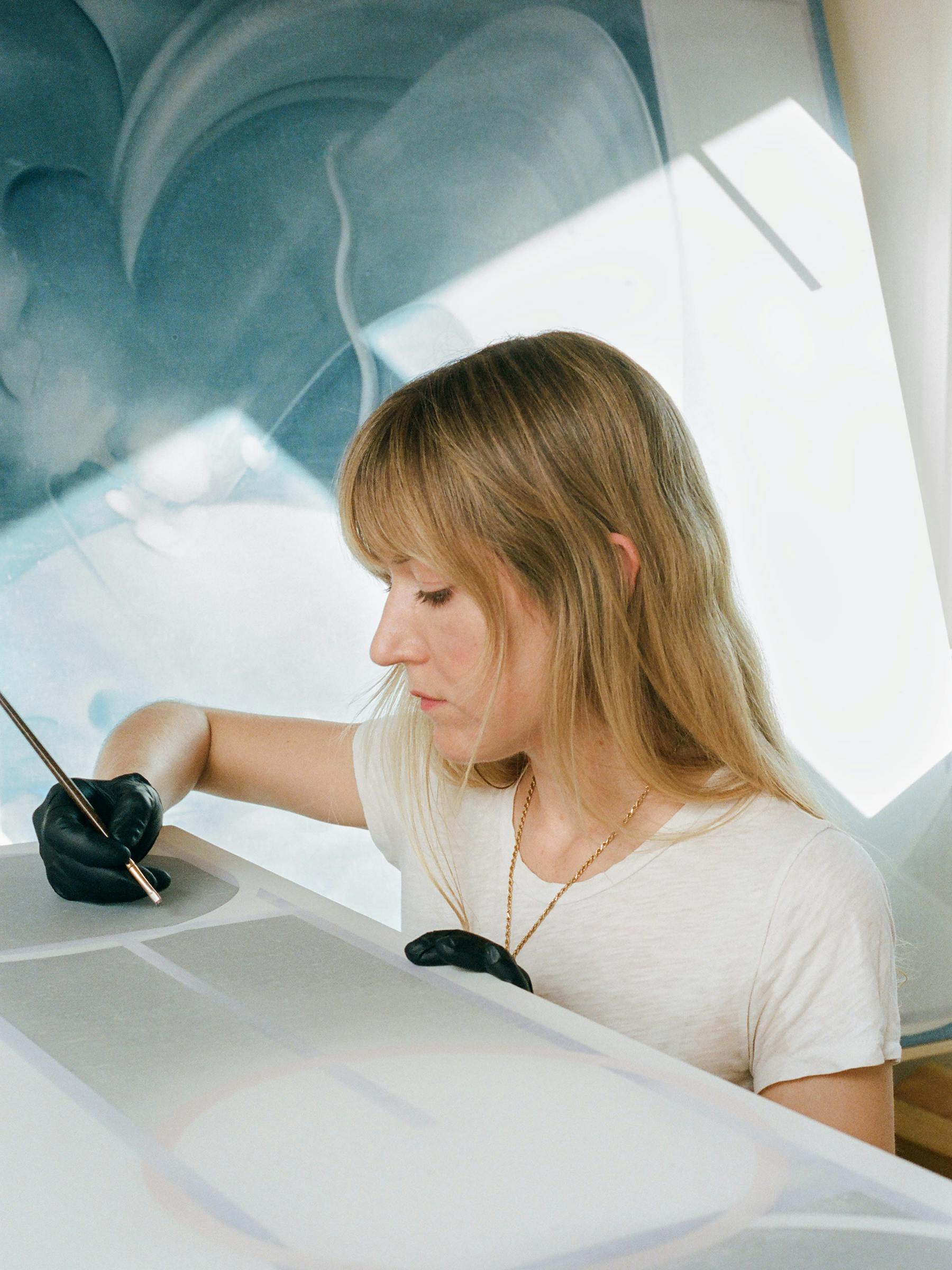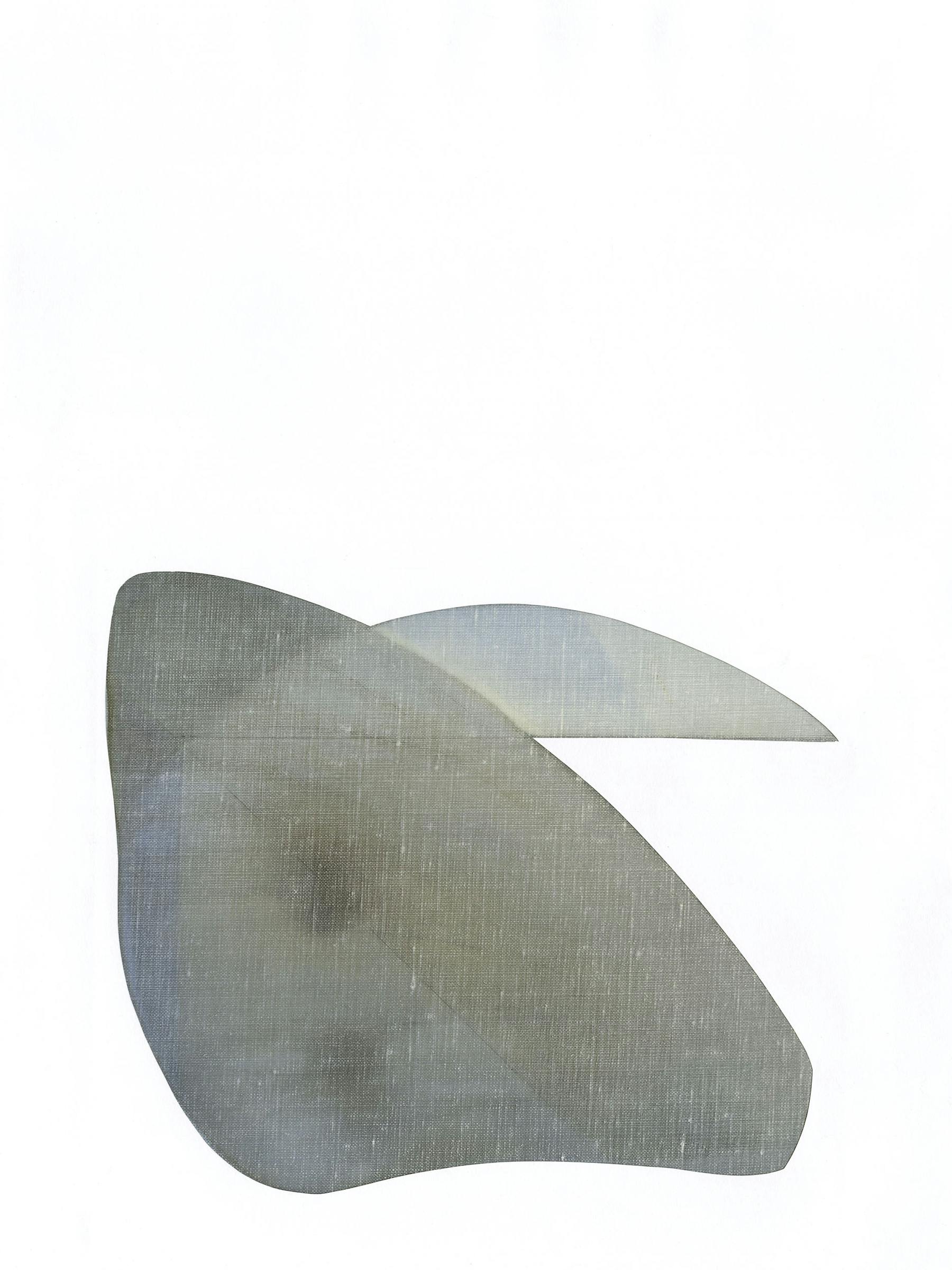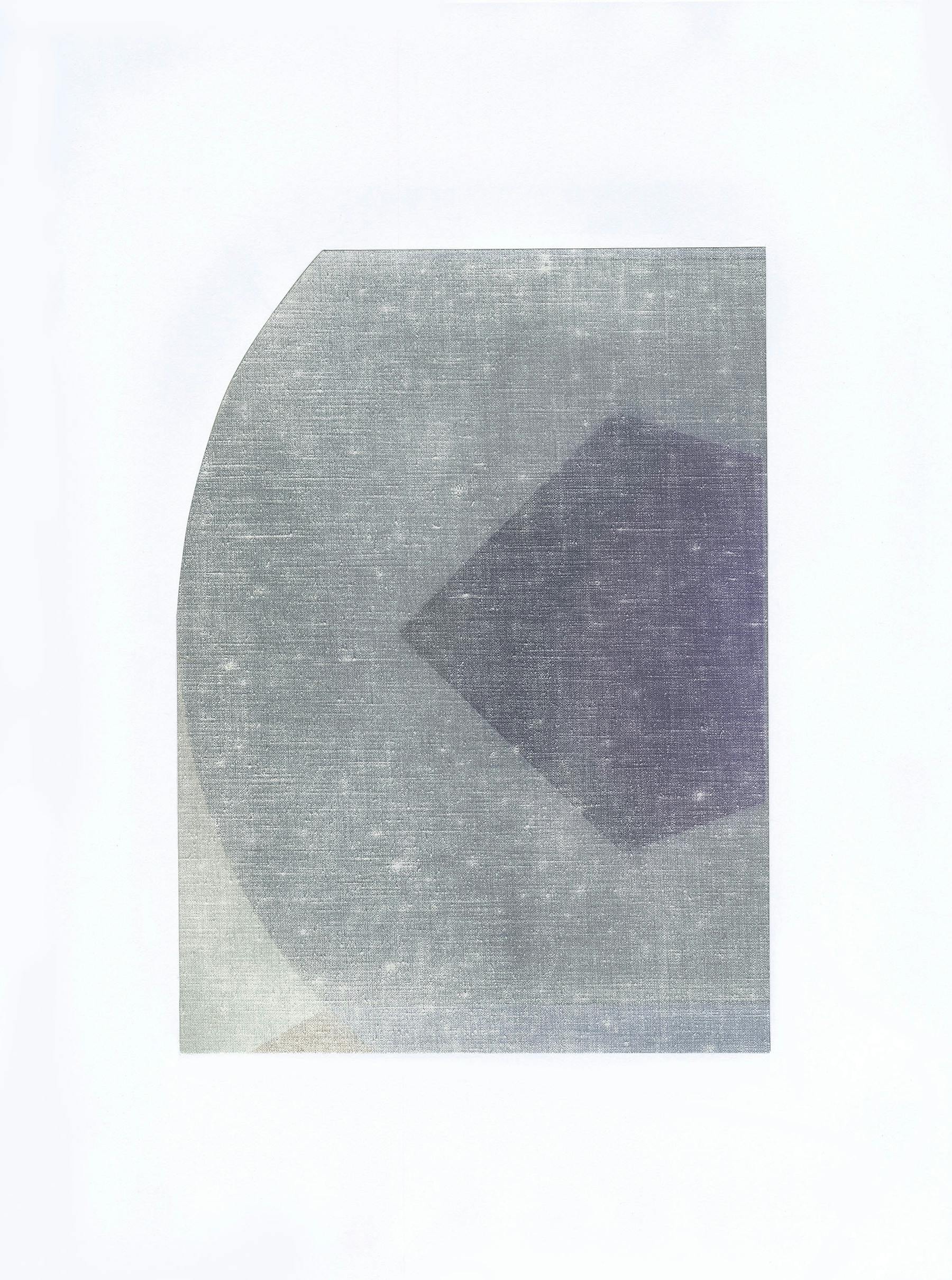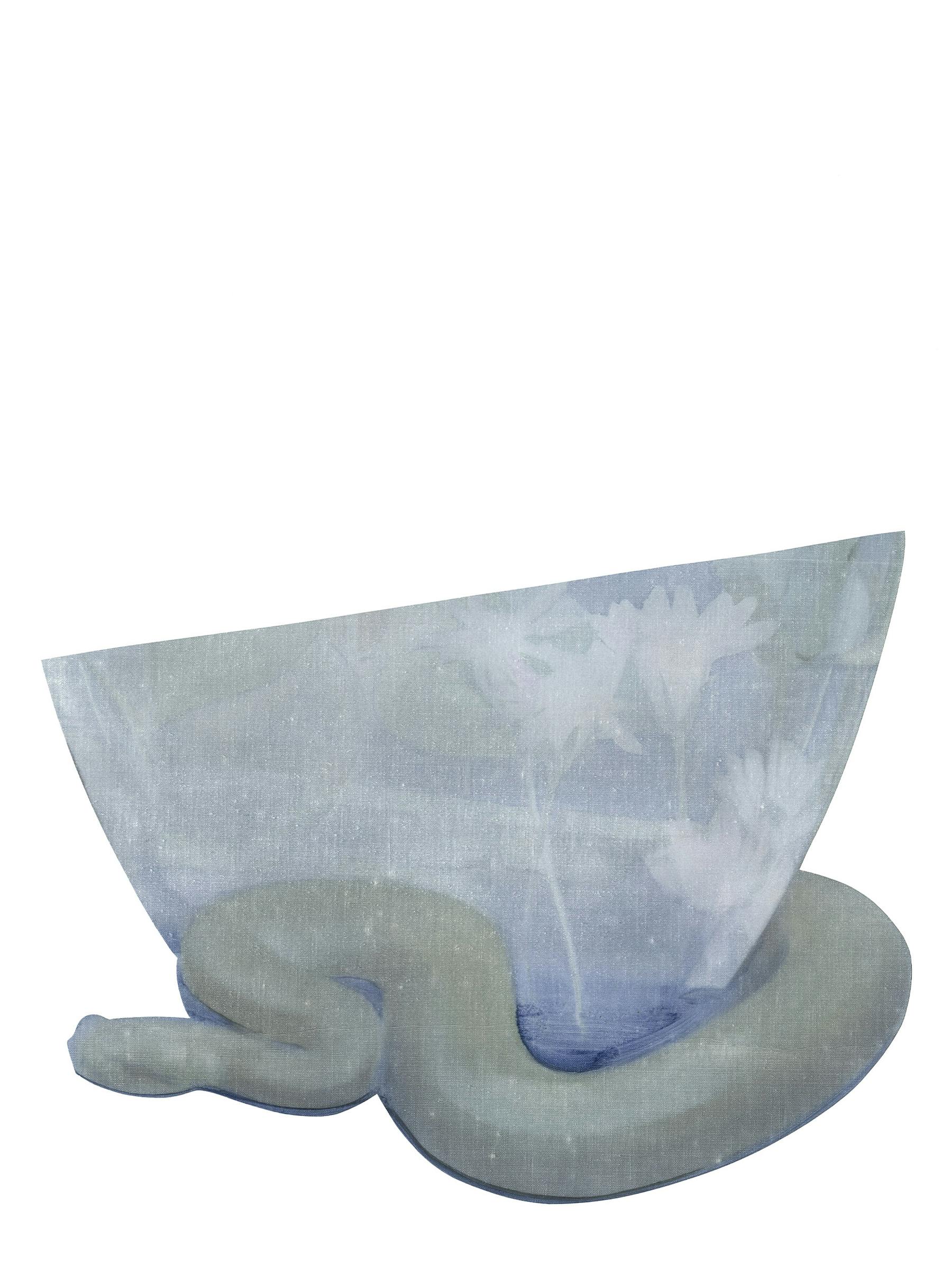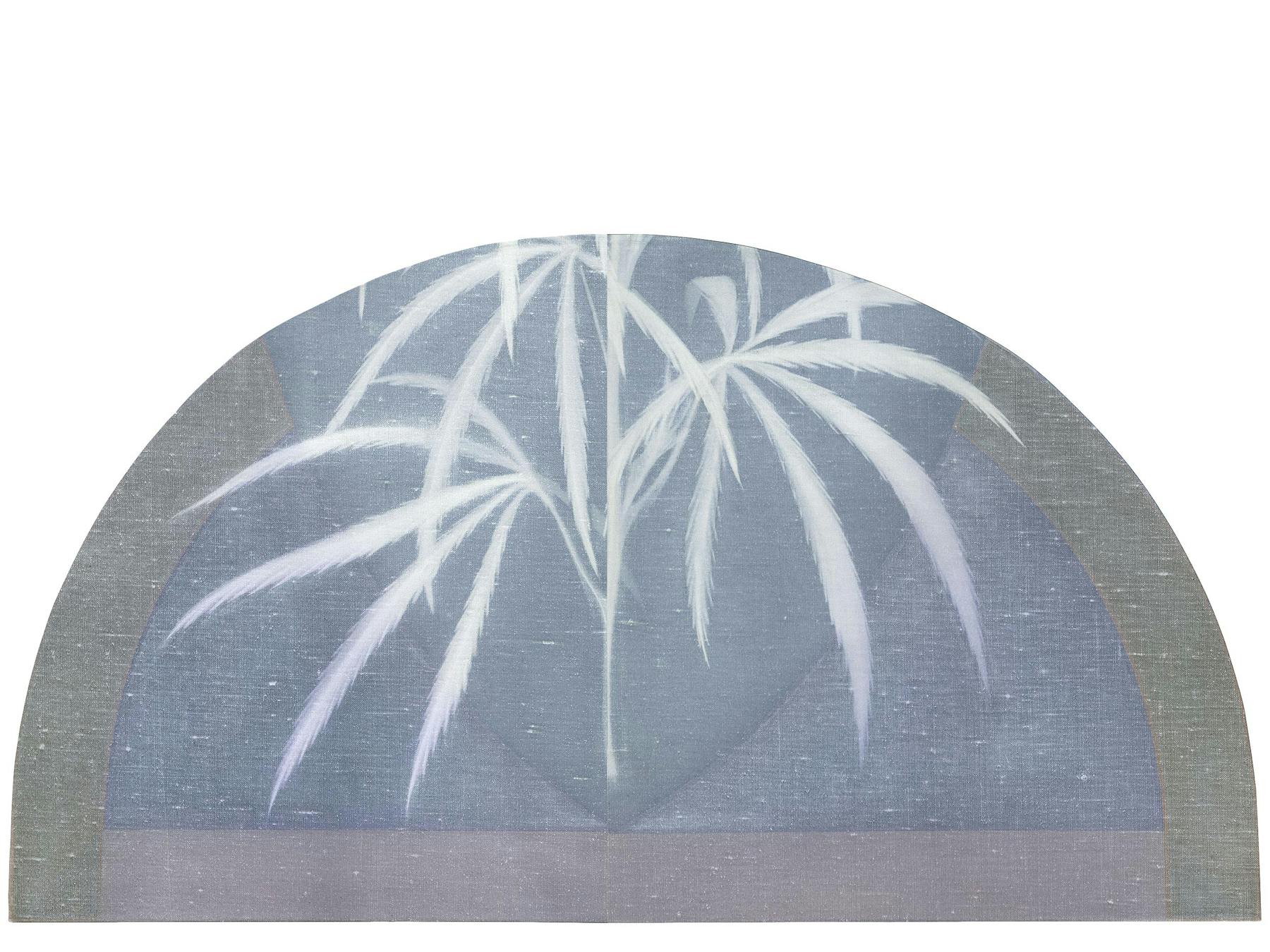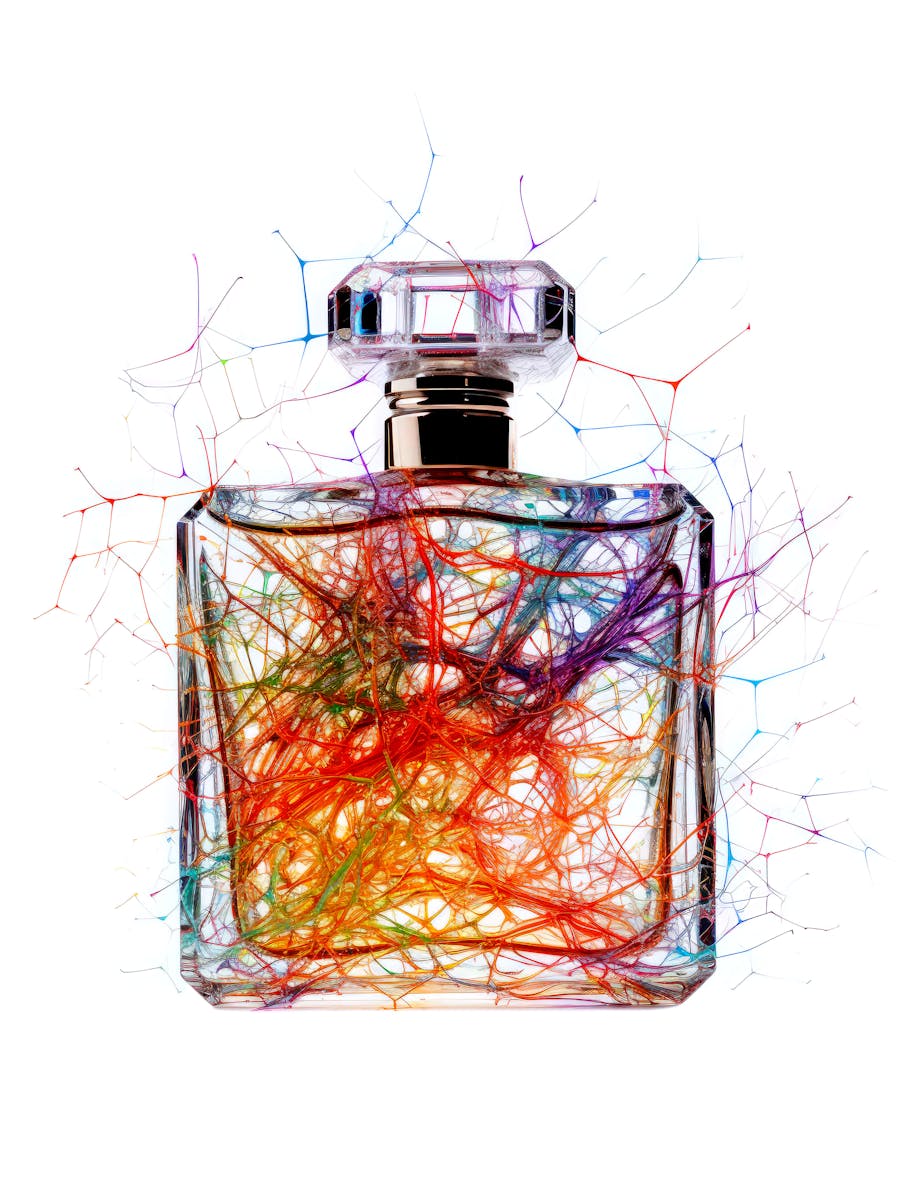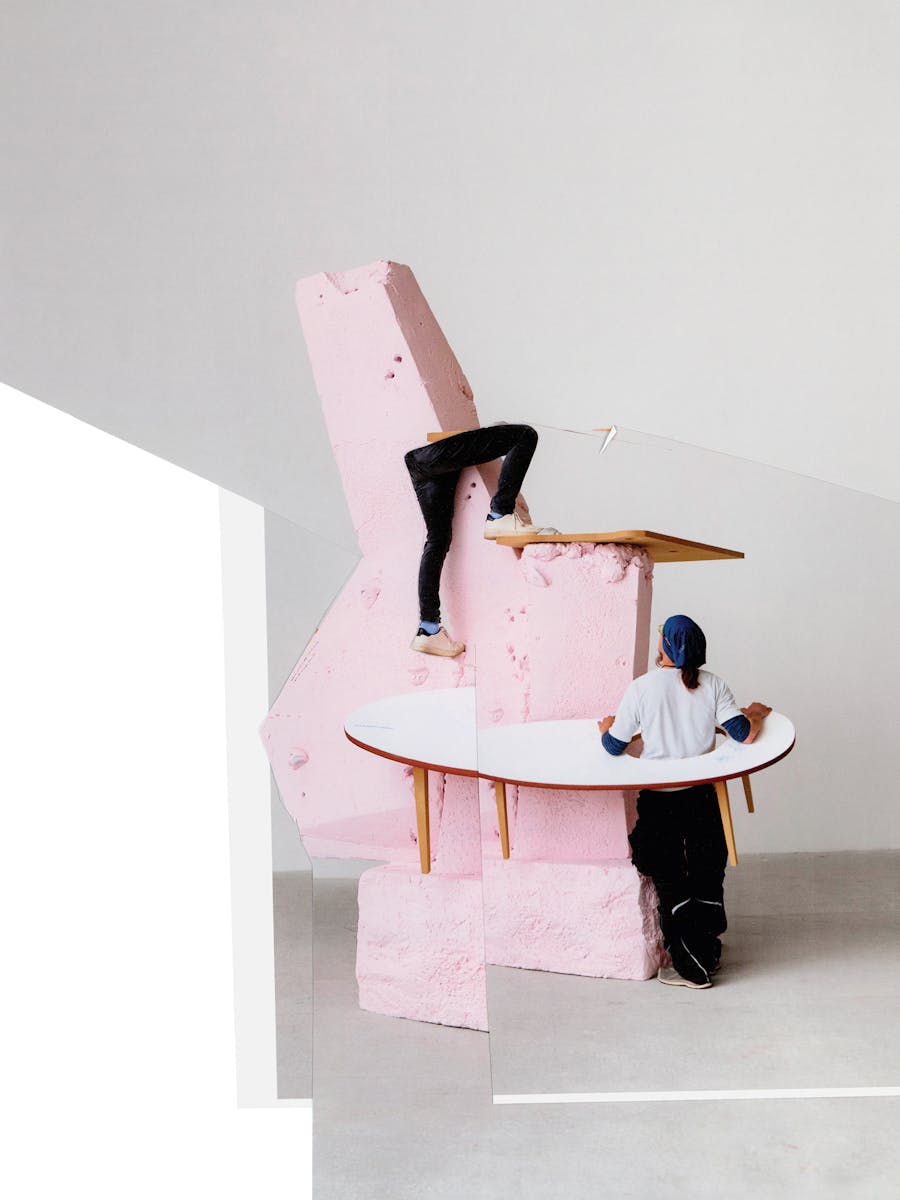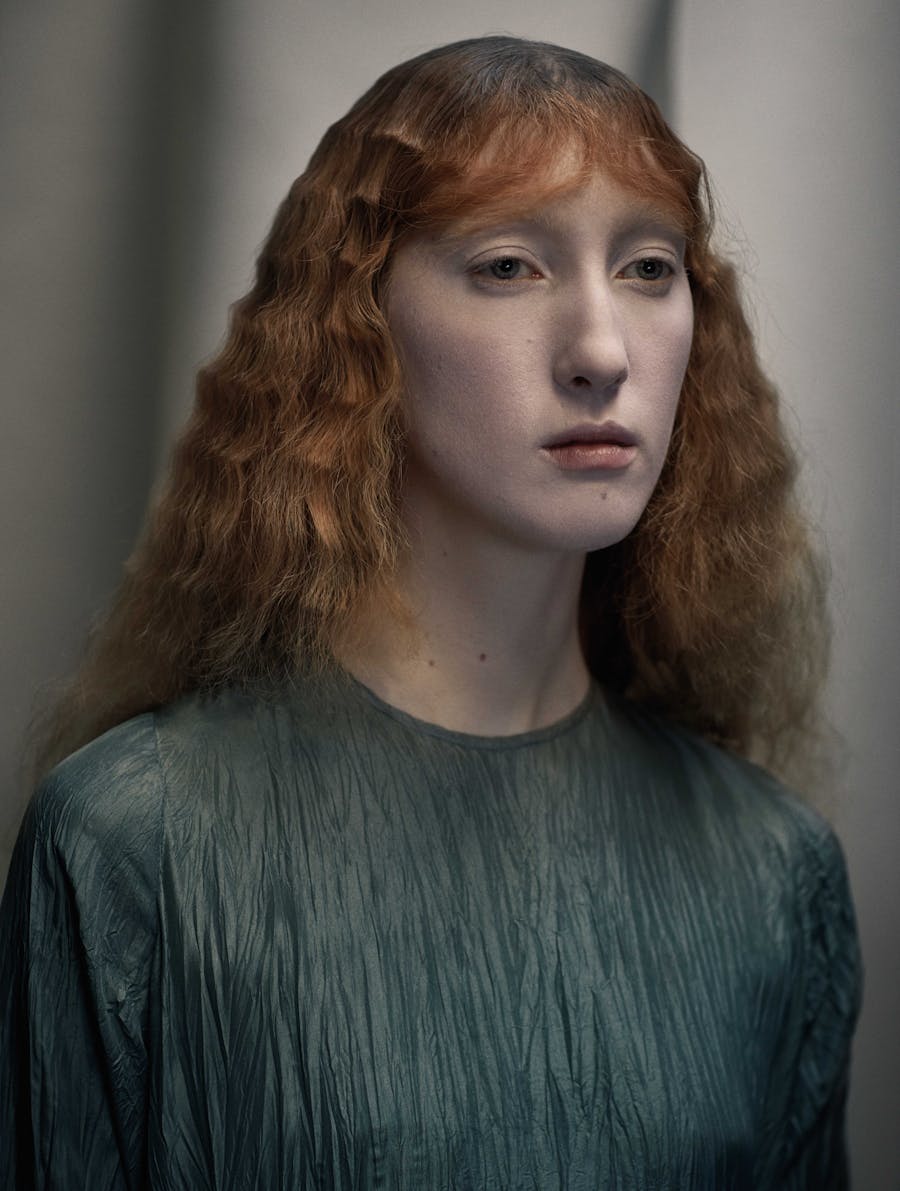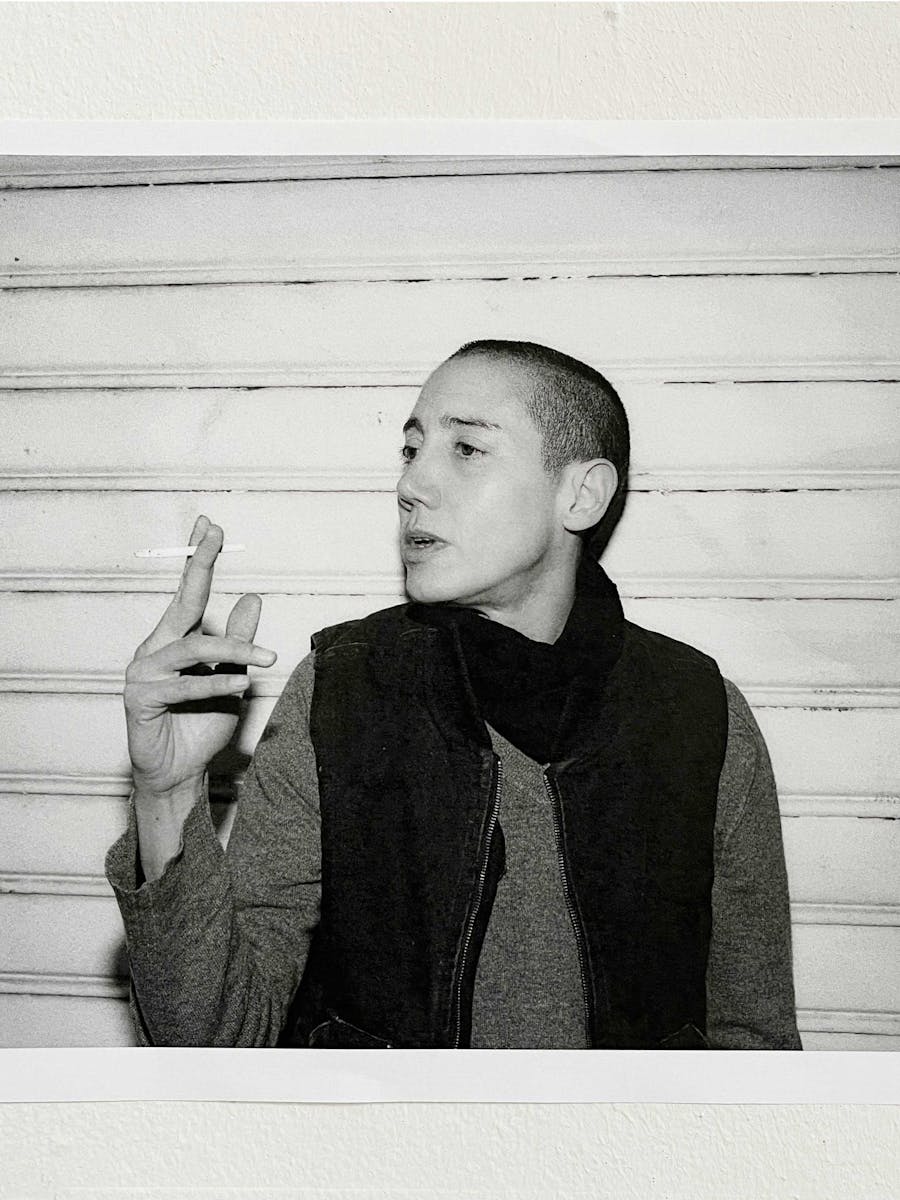From the Guru Issue
Theodora Allen’s world is subtle, enigmatic, filled with profound and multilayered meaning. The Californian artist creates paintings that draw the viewers in a transcendental state, delivering an meditative and deeply introspective experience through art. We met with Theodora in her studio in Pasadena, LA, and discussed about the intersection between creativity and spirituality, the rise of the guru mentality in the contemporary art world and her contribution to this issue.
What was the process behind your collaboration with Exhibition Magazine?
For this project I’ve pulled from a cache of failed painting—work that I made over the past several years but ultimately deemed unsuccessful. Some were paintings that I was curious about, so I kept them around for a bit. Others had gone too far out, and I wasn’t able to bring them back into view. Often I learn more from these outliers than from the paintings that come together sans struggle. At the very least they teach me about the limits of perfection and control.
Using the blank pages of the magazine as a viewfinder, I’ve cut out windows that isolate and highlight various elements from the paintings. Some shapes are delineated by these windows, others are abstracted by them. The project became about finding new in the old, reducing, distilling, and locating moments of continued potential through a sort of cannibalization of old work.
What is your background and how did you find your path as an artist?
I was born and raised in Los Angeles, where I still live. There is a decisively California sensibility to the work that I make. When I meet people that grew up here as well, I can tell almost immediately. They’re rarely the woo-woo folks that feed into that LA stereotype. The quality is… super grounded, open, and generally unflappable.
My path as an artist has been about following my intuitio—making the work that I want to make and blocking out the rest. I’m looking to the future, looking inwards, and pulling from the eternal. I avoid looking from side to side… makes sense?
Do you have a daily spiritual practice? If yes, could you tell us more about it?
Painting is the only practice that I regularly keep. The work is laborious and solitary, and I’m always working at it. On the good days it’s meditative…the rough days are consumed by rumination.
The words “spiritual” and “spirituality” give me pause, as the term means different things to different people. I believe we make who we are—that’s more Humanist than spiritual. But I do think there are various paths to experiencing transcendence; Art and music certainly have that power. Hallucinogens have that power. All tools to reveal the interconnectedness of existence, and the gamut of shared human experience.
The art-world seems to have many “gurus”… money, fame, power, eternity and even actual artists turned into gurus by their astonishing number followers and their influence over the masses. How do you relate to the “guru” mentality? Is there anyone or anything that you follow as your spiritual leader?
I’m not really one to join in, and rarely find myself looking for outside guidance in answering the big questions. Happiness and fulfillment—it’s personal, and there’s no benchmark for personal success. And yes, there are many false prophets in this field that you have to disregard.
I have great respect for the people that dedicate their lives to the pursuit of art, be it visual or otherwise. I’m interested in the makers that keep challenging themselves—where the output is both personal and resonant on a larger scale. There are a number of musicians that I admire, but I wouldn’t call them spiritual leaders. The ones that interest me were making art that gave their own life meaning, and sending it back out… It’s beautiful and important work.
After the shift from the so-called Age of Pisces to the Aquarian Age in 2011, more and more people seem to be interested in spirituality. LA and California in general have always been major hubs for any sort of esoterica, and lately they became major destinations on the art map due to the considerable amount of artists relocating from NYC. Does this have an impact in the production of contemporary art? Do you notice an echo of spiritual topics in the current art production?
Yes, it’s in the air at the moment, isn’t it? Undoubtedly a response to the grim state of our world at present. The schism in politics; technology that’s meant to connect people, but ends up just feeding personal narcissism and alienating us from real human interaction; the destruction and corporatization of the natural world. Everyone’s tuned into their screens. The people that haven’t been desensitized by it all are looking elsewhere for meaning— trying to find what’s left of nature to get lost in, or turning inwards.
Your paintings fluctuate between landscape and mindscape like ghosts caught in layers of multiple dimensions. Whimsical yet always figurative, they feature objects, natural elements, concrete things. Do you tune into your own headspace when you paint or do you let external suggestions guide you?
Some paintings are more idiosyncratic than others. The “Distillation” paintings have their own internal logic. I’ll make a set of rules as a framework and then work within that system. Other paintings pull from exterior references. There is a compression, or flattening… merging… that happens through the painting process. The driving force across chapters of work continue to be the recurrent play of dualities: sources of lightness and dark, permanence and ephemerality, interior and exterior space, a compression of macro and micro forms that are simultaneously forming and dissolving.
Your work connects classical painting with abstractionism, symbolism and California’s 60’s psychedelia like in a stream of consciousness. Is time an illusion that you overcome by looking inward or a linear structure that you affirm through symbols of persistence ranging from different eras?
I’m looking at the history of painting and what our generation is emerging from. At different points in time these concerns were more ubiquitous, or more of the zeitgeist. But I don’t think any of it is owned by, or qualified by, any other single time. Symbols and themes tend to operate like a seed in the ground—from dark to light, and back again. The commitment to artistry speaks to a certain ethos though.
Is there any specific reason for which you tend to avoid the human form as the subject of your works?
There’s an infinite number of possibilities within representational painting…So, you narrow it down, and focus in on the elements that further the world you want to build. I will often refer more obliquely to the human form—the arched windows in many of the paintings are roughly the dimension of the body and they invite that comparison. There are also a few analogous human profiles that I return to from time to time.
By painting on linen you are able to achieve the dreamy, ethereal quality that is so quintessential to your art. Could you share more about this very specific technique?
The process involves adding and removing oil paint on linen. I’m slowly putting down thin layers of paint, and then systematically wiping it away with a soft cloth… the weave becomes pronounced through this action. It’s a process that’s always evolving, but the white of the painted ground, and the grid of the fabrics weave are paramount to the work. It’s that action of removal that gives the feeling of distance…That ethereal quality, as you said. It’s not about preserving my hand in the work, or self expression through mark making. It’s about preserving and revealing the paintings inner light, and the more opacity added in, the more the light source in the painting dims.
Do you experience a finished artwork as an unexpected manifestation of an epiphany or as the result of a grounded and mindful research?
I’ll get an idea about a certain experience or feeling, and I’ll collect material that evoke that feeling for me. The adding and removing, the experience of making the painting—all of that becomes a part of the feeling. Sometimes I’m an architect, building this thing up with precision and referring to my blue print. Other times I’m carving out or excavating. I’ll go over a shape many times, emphasizing or obfuscating a form. There are historical references, and allusions to symbolic conventions in the work, but I wouldn’t classify it as History Painting, or Symbolism.
Your paintings were an inspiration for Hedi Slimane’s second women’s collection at Saint Laurent. As Exhibition is a fashion magazine blurring the lines of art and fashion, how do you see the intersection of this two creative universes?
When Slimane was at Saint Laurent, he commissioned several artists to create books that were sent out as the invitation to his runway shows. Mine was made up of paintings that I had made in the years prior, inter-spliced with photographs of the cosmos. Slimane had invited artists whose work felt akin to the spirit he was bringing with him to the iconic fashion house. It also continued the tradition of the artist collaborations that YSL was known for in the 60’s and 70's— they’d worked with Lalanne, Mondrian, and Warhol. It was a cool project to be a part of.
I don’t see the two worlds as being dissimilar. There’s artfulness and invention in true fashion. Fashion, even more than art, seems to define culture. And just like in the art world, there’s also a lot that’s derivative and commercial—mass production of luxury goods that riff on trends and reinforce the status quo.
What are your plans for the future and what’s the
inspiration for your new series of works?
At the moment I’m working on paintings that focus on structure, compartmentalization, and flattening of space. Perforated screen-like boundaries delineate the compositions… There’s a feeling of mechanization and order. And the recurring moth motif has evolved into a graphic element, where it’s metamorphosed with the “screen”. They’re the most Apollonian of my output thus far.
